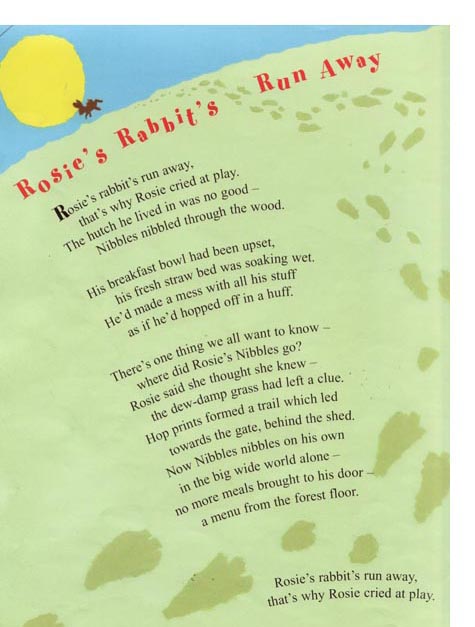
In picture books, words and pictures work together to deliver the story. Illustrations often give as much information, if not more, than the text. To me, the whole idea of a poem is that you capture something in words, which will hopefully paint pictures in the mind of the reader - to give too much information infringes on the mental pictures being conjured up by the words. Therefore when it comes to poetry, I find that illustrations have a supporting role only. They can decorate and evoke a mood, showing the setting rather than the details.
When I began this book I had no idea what style of artwork to use - all I knew was that in my head I envisioned the pages as being coloured; this led me to use paper collages. Working in different mediums draws different aspects out of you as an artist. It’s like asking a pianist who normally plays classical music to start belting out some Boogie Woogie.
 I began this adventure by hunting down a huge range of colours which became my new palette, and then started playing with it - sketching, tracing, tracing, ripping, cutting and sticking. Using paper makes you very aware of shapes because you are physically laying the colour down in shapes rather than gradually applying it from a brush or a pen. In collage lines are not drawn but created by the edges of the pieces of paper. I soon realised that I could create different types of edges by either cutting the paper for sharp edges (as used on the boys hair in this illustration) or ripping it for a soft textured edge (as seen on the shadow under the door).
I began this adventure by hunting down a huge range of colours which became my new palette, and then started playing with it - sketching, tracing, tracing, ripping, cutting and sticking. Using paper makes you very aware of shapes because you are physically laying the colour down in shapes rather than gradually applying it from a brush or a pen. In collage lines are not drawn but created by the edges of the pieces of paper. I soon realised that I could create different types of edges by either cutting the paper for sharp edges (as used on the boys hair in this illustration) or ripping it for a soft textured edge (as seen on the shadow under the door).
As this was a collage book I made a rule that I couldn’t ‘cheat’ by drawing any lines onto the artwork; this proved a challenge when the subject matter required a fine line. For example, check out Miss Chadwick’s handwriting, and the tooth marks on the orange pencil in the illustration below!
